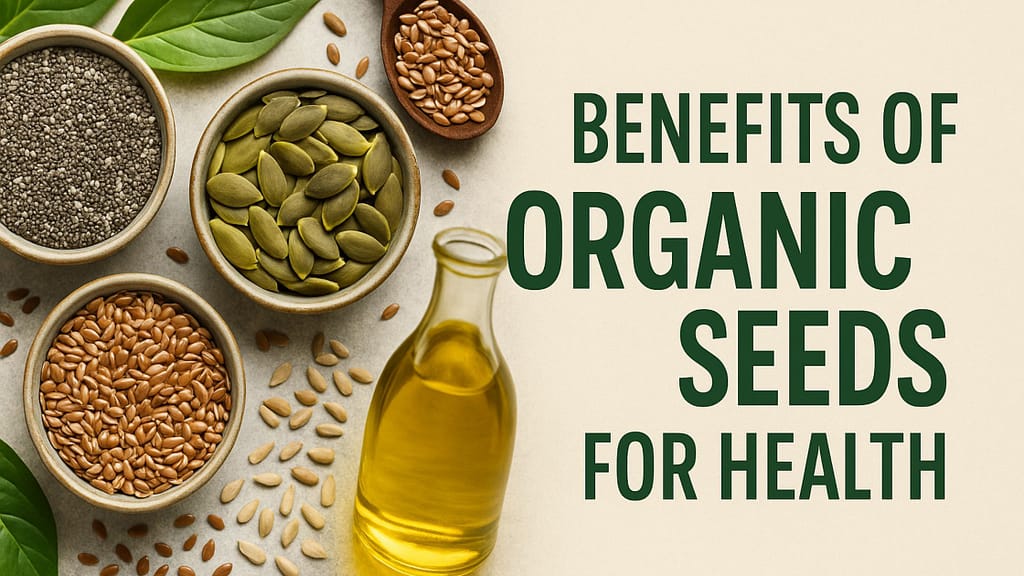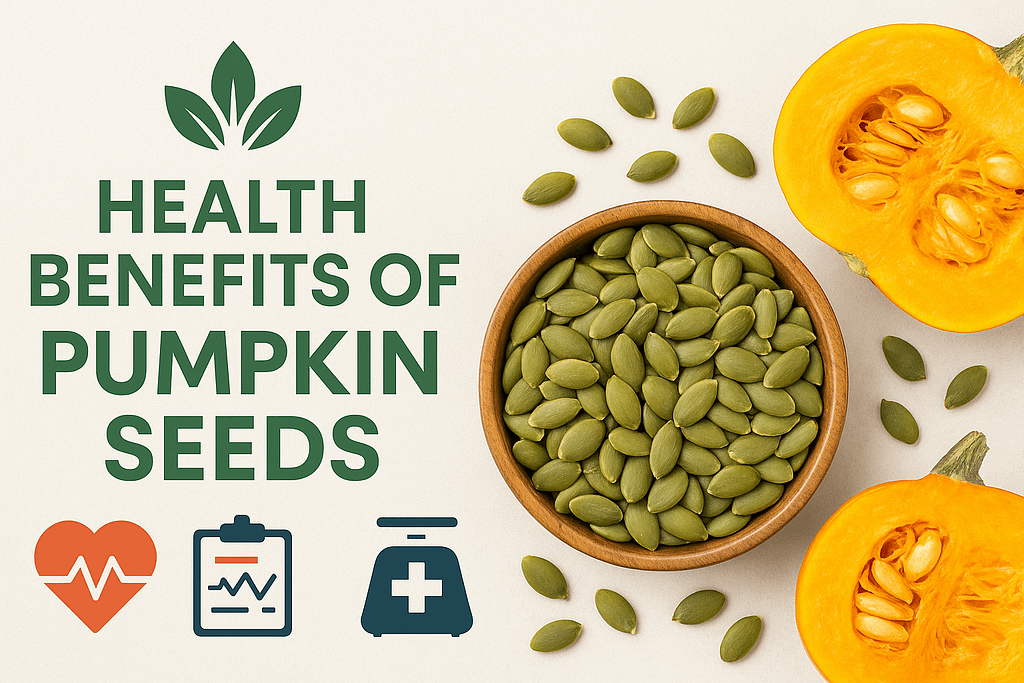Introduction
Most individuals turn to a protein bar, hard-boiled eggs, or Greek yogurt when it comes to snacks that are loaded with protein. However, there is something you may not realize: some of the smallest foods on the planet are, in fact, some of the most powerful sources of protein that can keep you full and vibrant throughout the day.
We are talking about snack seeds of high protein. These little powerhouse foods contain large quantities of protein, fiber, and healthy fats in every portion. No matter how plant-based you are, whether you are trying to keep your weight down or you are simply trying to find healthier options to processed snacks, this guide will provide you with the specifics of which seeds will provide you with the most protein and how you can enjoy them.
Quick Answer: Which Seeds Pack the Most Protein Rich Seeds?
You may ask yourself why you need seeds in your snack list when there are nuts and protein bars everywhere. Here is the strong argument in favor of seeds:
| Seed | Protein per ounce | Key nutrients |
|---|---|---|
| Hemp seeds | ~10g | Complete protein, omega-3s |
| Pumpkin seeds | ~8-9g | Zinc, iron, magnesium |
| Sunflower seeds | ~6-7g | Vitamin E, folate |
| Chia seeds | ~5g | Fiber, omega-3s |
| Flaxseeds | ~4g | Lignans, fiber |
| Sesame seeds | ~5g | Calcium, antioxidants |
Hemp, pumpkin, and sunflower seeds lead the pack when it comes to protein content, making them ideal choices for your snack rotation.
Why Choose Seeds for Your Protein Fix?
You may ask yourself why you need seeds in your snack list when there are nuts and protein bars everywhere. Here is the strong argument in favor of seeds:
Plant protein energy: Seeds are clean complete nutritional energy that is compatible with any diet – vegan, vegetarian, or omnivore.
Nutrient density: In addition to protein, you are obtaining key minerals such as magnesium, zinc, and iron that most people are lacking.
Allergy-friendly: Most seeds are tree nut-safe, unlike nuts, which makes seeds an ideal choice when it comes to school lunch and the snack table.
Natural and unprocessed: No artificial preservatives, additive or added sugars – just pure nutrition.
Budget-friendly: Seeds are cheaper than the majority of protein bars or specialty snacks per gram of protein.
The presence of protein, healthy fats, and fiber in seeds makes them satiating in the body in such a way that individual processed snacks could never achieve the same.
The Best Protein Rich Seeds for Snacks
We will take the protein profiles of each of the seeds and find the best ways to make them taste delicious.
Hemp Seeds – The Protein Champion
Protein per ounce: 10 grams
There is a good reason why hemp seeds top our list. They are among the very few vegetable foods that will give you complete protein, i.e. they contain all the nine essential amino acids that your body cannot produce. In addition to protein, hemp seeds provide magnesium to help the muscles work and omega-3 fatty acids to maintain brain health.
How to snack: Sprinkle them over yogurt, blend into smoothies, or eat them straight from the bag. They have a mild, nutty flavor that works with almost anything.
Pumpkin Seeds – The Mineral Powerhouse
Protein per ounce: 8-9 grams
Discard those pumpkin seeds when carving jack-o-lanterns. These green jewels (also known as pepitas) contain a high level of protein and zinc to boost the immune system and iron to boost energy. They also contain magnesium that most adults are poor in.
How to snack: Roast them with sea salt and your favorite spices, add them to trail mix, or try pumpkin seed butter as a nut-free spread.
Sunflower Seeds – The Vitamin E Star
Protein per ounce: 6-7 grams
You may think of baseball games when you think of sunflower seeds, but they are no joke. They also contain a good amount of protein, and they are highly fortified with vitamin E, a strong antioxidant that keeps your cells safe.
How to snack: Choose unsalted varieties when possible, add them to homemade granola, or use sunflower seed butter in sandwiches.
Chia Seeds – The Fiber Champion
Protein per ounce: 5 grams
Although chia seeds are average in terms of protein content, they are fat-soluble fiber champions with approximately 10 grams per ounce. This is because they are very filling as a result of this fiber content as well as their liquid-absorbing and swelling properties.
How to snack: Make chia pudding by soaking them in milk overnight, add them to smoothies, or sprinkle over salads for crunch.
Flaxseeds – The Omega-3 Source
Protein per ounce: 4 grams
Flaxseeds contain good protein as well as lignans – plant compounds that have antioxidant properties. They are among the wealthiest vegetal sources of omega-3 fatty acids as well.
How to snack: Buy them ground or grind them yourself for better absorption. Mix into yogurt, oatmeal, or homemade energy balls.
Sesame Seeds – The Calcium Contributor
Protein per ounce: 5 grams
Sesame seeds have incredibly high levels of calcium to keep bones healthy, but it is in such small quantities that it is easy to overlook them. They are also full of healthy fats and other antioxidants.
How to snack: Try tahini (sesame butter) with vegetables, sprinkle seeds on salads, or make homemade sesame seed bars.
How Seeds Stack Up Against Other Protein Snacks
Wondering how your favorite seeds compare to other popular protein sources? Here’s the breakdown:
- Hemp seeds (10g) vs Almonds (6g) – Seeds win on protein density
- Pumpkin seeds (9g) vs String cheese (6g) – Seeds provide more protein plus minerals
- Sunflower seeds (6g) vs Peanut butter 2 tbsp (7g) – Very similar, but seeds are less processed
Seeds hold their own against traditional protein snacks while offering unique nutritional benefits and greater convenience.
Practical Ways to Enjoy Protein Rich Seeds
Are you now prepared to start eating seeds as a snack? The following are easy, delicious methods:
Self-assembled trail mix: Adding hemp seeds, pumpkin seeds, and dried fruit together will provide a balanced meal that is easy to travel with.
Roasted seeds mix: Sprinkle pumpkin and sunflower seeds with olive oil and spices and then roast them till they are golden and crispy.
Protein enhancers: Add in a tablespoon of hemp or chia seeds into your morning smoothie to provide additional protein and substance.
Energy bites: A combination of dates, oats, and your preferred seeds plus a drizzle of honey rolled into portable balls.
Seed butters: Have sunflower or pumpkin seed butter on toast or on fruit, or just out of the jar.
Seeds for Different Health Goals
For weight management: The protein and fiber in seeds induce satiety, or fullness, between meals. Chia and flax seeds are very filling because they contain fiber.
For plant-based diets: Hemp seeds contain the full range of proteins, and pumpkin seeds contain minerals that are difficult to find, such as zinc and iron.
For heart health: The omega-3s in hemp and flax are healthy fats that help keep the heart healthy.
For blood sugar balance: Seeds do not affect blood sugar levels dramatically, which is why they are a clever choice as a consistent source of energy.
Storage and Safety Tips
To preserve fresh and safe seeds follow these easy tips:
Storage: can be stored in refrigerator in airtight containers up to 6 months or frozen and stored longer.
Portions: A serving is typically 1-2 tablespoons or about 1/4 cup, providing adequate protein without excessive calories.1-2 tablespoons or approximately 1/4 cup is a typical serving of protein that does not contain a lot of calories.
Allergies: Although they are very rare, seed allergies exist. Plant new seeds in stages and observe the reaction.
Quality: shop where there is reputed source and buy organic where possible to prevent pesticide residues.
FAQs
How much protein is in 1 oz of pumpkin seeds? About 8-9 grams of protein, plus zinc, iron, and magnesium for additional health benefits.
Which seeds have the most protein? Hemp seeds lead with approximately 10 grams per ounce, followed closely by pumpkin seeds at 8-9 grams.
Are roasted seeds as nutritious as raw seeds? Light roasting preserves most nutrients and can actually increase antioxidant availability. Avoid heavily processed or over-salted varieties.
Can I eat seeds every day? Yes, seeds make excellent daily additions to your diet. Stick to appropriate portions (1-2 tablespoons) to get benefits without excess calories.
Are seeds better than nuts for protein? Hemp seeds actually contain more protein per ounce than most nuts, and seeds are often more allergy-friendly than tree nuts.
Conclusion
Snack seeds are a wonderful combination of nutrition, convenience, and taste due to their high protein content. Hemp with all its amino acids profile to the minerals in pumpkin seeds, these mini foods are packed with nutrients.
They are inherently portable, affordable, and compatible enough to serve in an infinite number of recipes and snack combinations. Seeds should be a part of your pantry whether you are trying to increase your protein consumption, or need nut-free options, or just need to add variety to your healthy diet.
Begin with one or two types that seem to make you feel the most, and try various ways of preparation, and see how they feel to you. A lot of individuals discover that adding seeds to their daily lifestyle can stabilize their energy levels and curb their wishes to consume foods that are less healthy.
Ready to give them a try? Buy a bag of hemp or pumpkin seeds this week and learn why these tiny items are creating so much noise in the healthy snacking industry.



